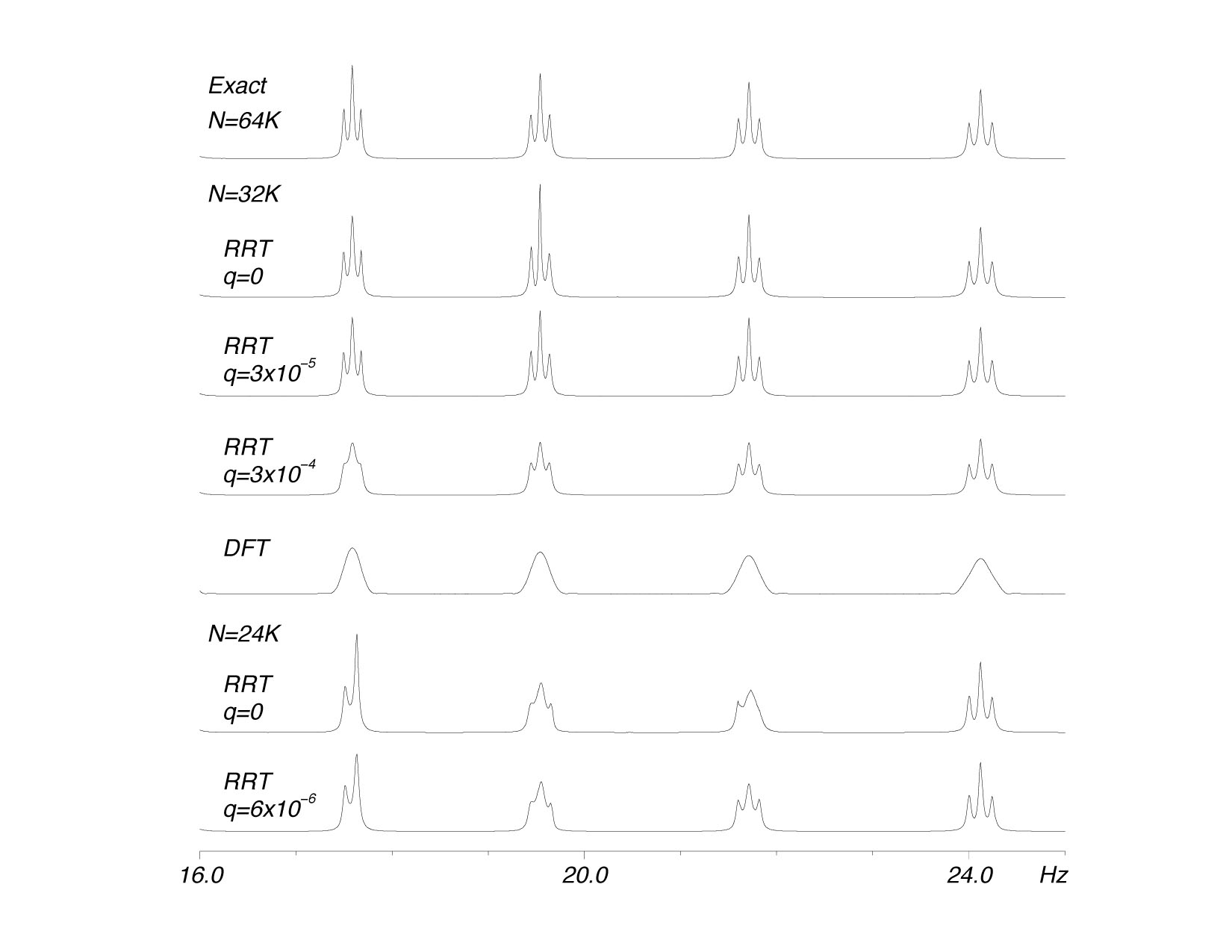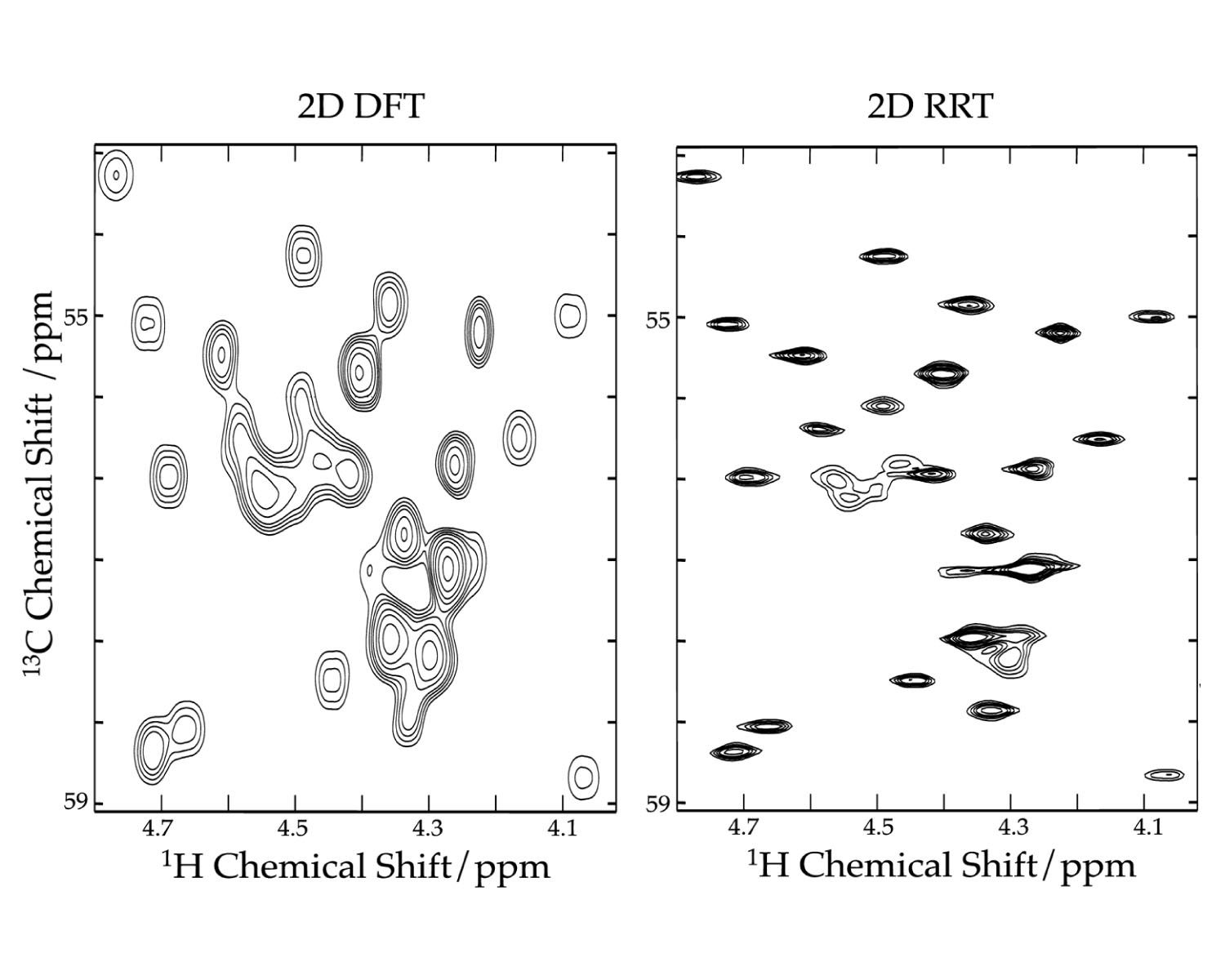The Regularized Resolvent Transfrom (RRT) is a new method recently
developed for high resolution spectral estimation. It emerges naturally
from the Filter Diagonalization Method (FDM), but
requires no diagonalization. It is a direct transformation of time domain
data into the frequency domain spectra (just like Fourier Transform!).
RRT is numerically very efficient, and easy to use with little need to
fiddle with different parameters. RRT uses the same data matrices as what
are computed in FDM, but constructs the spectra without obtaining the intermediate
spectral parameters (complex frequencies and amplitudes). During
the contstruction of the spectra, one needs to invert the matix pencils.
These matrices are typically singular and require regularization. Among
various ways of regularization,
Tikhonov regularization is particularly
efficient easy to implement. A regularization parameter is then introduced
when applying Tikhonov regularization. A large regularization suppresses
the artifacts and small spectral features, providing a more uniform spectral
estimation with decreasing resolution. For signals that are too heavily
truncated, RRT spectra may show some instablility especially considering
the phase of peaks. In these cases, an Extend Fourier
Transform (XFT), which combines DFT with RRT, is proposed to
improve the preformance. For more details, please refer to Ref.
1 or download a poster about RRT(JPEG
file, 345K), which was presented recently on 42nd ENC meeting in Orlando,
Florida.
1D example
2D example
references
A 1D Example: 1D RRT applied to a model
signal called "Jacob's Ladder", with comparisons to FDM and DFT.
The variable "q" is the regularization parameter, and the numbers shown
are normalized according to the norm of the complex signal.
(click here to view a larger version)

A 2D Example: Comparison of 2D DFT and
2D RRT spectra of a constant time HSQC NMR signal of human ubiquitin in
D2O (2). The signal used contains 2048x128
complex data points. The FT picture is too blurry to be very useful, while
the RRT spectra shows significant resolution enhancement.
(click to view a larger version)

References
1. J. Chen, A. J. Shaka, V. A. Mandelstam, J. Magn. Reson. 147,
129 (2000).
2. A. A. De Angelis, J. Chen, V. A. Mandelstham and A. J. Shaka, J.
Biomol. NMR (submitted).

